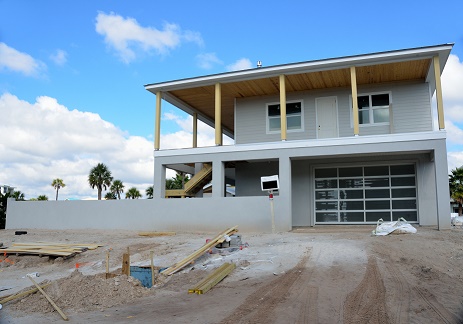 Whether you’re building a new home from the ground up or purchasing a house for the first time, it pays to know the pros and cons of your construction materials–after all, they have to stand the test of time. Homeowners have to make informed decisions about the materials that go into their home construction in order to avoid costly repairs and avoidable damage in the future.
Whether you’re building a new home from the ground up or purchasing a house for the first time, it pays to know the pros and cons of your construction materials–after all, they have to stand the test of time. Homeowners have to make informed decisions about the materials that go into their home construction in order to avoid costly repairs and avoidable damage in the future.
There are many factors that go into deciding which material is right for your home. Climate is one of the most important, as well as other environmental considerations like flooding and air pollution. Here are a few of the most common building materials used in house construction, and reasons why they might–or might not–be a good idea for your home.
Recycled Steel
This material is gaining buzz as an environmentally sound replacement for wood beams in home construction, and for good reason. Recycled scrap steel reduces energy required for steel production by up to 75 percent and saves trees. With its ability to stand up to high winds and even earthquakes, it’s also incredibly durable, making it ideal for regions susceptible to hurricanes. Exposed steel beams don’t have the aesthetic appeal of wood, though, so weigh your options carefully. Steel is also a heavier construction material than wood, and might be more costly to obtain.
Wood
Probably the most popular construction material for houses, wood has many advantages. It is relatively lightweight and unlike steel, easy to cut. It’s also easy to add decorative elements to wood constructions to increase curb appeal.
The disadvantages to wood construction include vulnerability to water damage, fire, decay, and termites. When purchasing a wood construction home, it’s very important to check the integrity of support beams, etc. Wood is also a less environmentally sustainable choice than green building materials such as composite lumber or recycled steel.
Brick & Block
These materials are fireproof and immune to rot, making them good for sturdy foundations. Reinforced concrete blocks are also able to stand up to just about any environmental stress. In addition, these materials save on labor costs over wood construction. Often bricks are made of renewable materials, making them an environmentally safe choice.
The disadvantages of brick/concrete block construction include the heaviness of the materials which often require deep foundations. Porous bricks can be vulnerable to mold in damp conditions, and the materials can also be damaged by plant growth such as ivy. Another disadvantage of brick/concrete block construction is its brittleness if you live in an earthquake zone. Wood and steel construction are superior construction materials in that situation. Always inspect the quality of the brick and ensure that your construction is carried out by skilled laborers. While it is possible to have bricks replaced, the process is expensive and requires specialized workers.
It’s a good rule of thumb to see what other homeowners in the area use in their construction and find out which homes stand up to weather conditions the best. A small amount of research can save you from dealing with time consuming problems later on. Ensuring that your home is built out of quality materials that are suited to the climate will save in energy, insurance, and repair costs in the future.






